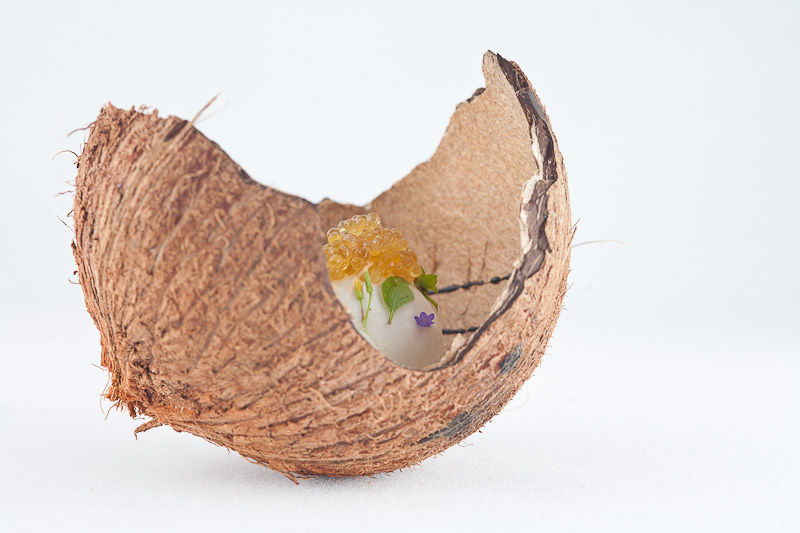
Sarah and I decided this is our favorite one yet, for all of the reasons: it’s beautiful, it’s delicious, and it was fun as hell to make.
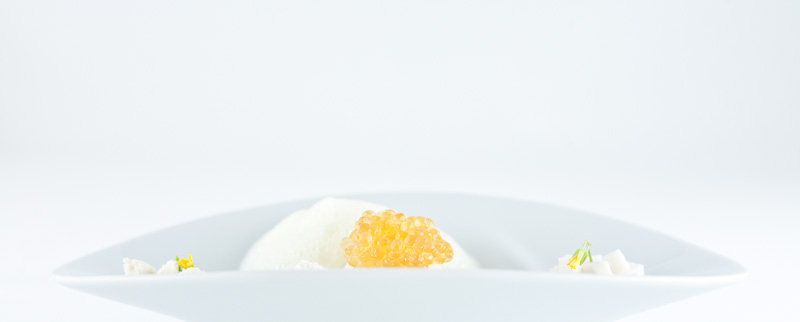
I picked this dish arbitrarily; other than the fact that it’s in the Fall menu, nothing else about it seemed especially tricky or seasonal. Then I tried gathering the ingredients, starting with the roe. At first I thought to just buy whatever roe I could find at Berkeley Bowl, but rereading the recipe gave me a moment of pause. The title lists the trout roe (specifically, brooke trout roe from Blis) as it’s headliner ingredient, and on closer reflection I figured what Alinea had done was build up a dish around this ingredient. I checked Blis’ website but the trout roe wasn’t listed, so I emailed Chef Steve Stallard (the owner) to ask him about it. He responded within an hour, telling me the ingredient had just gone out of season.
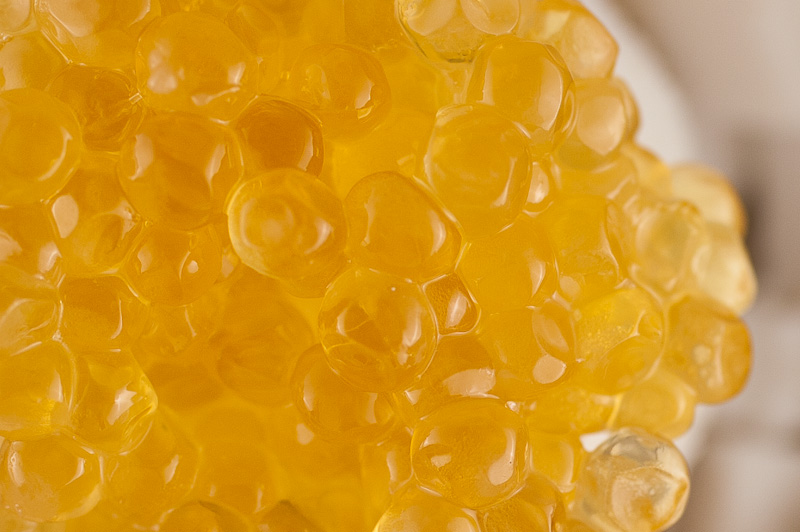
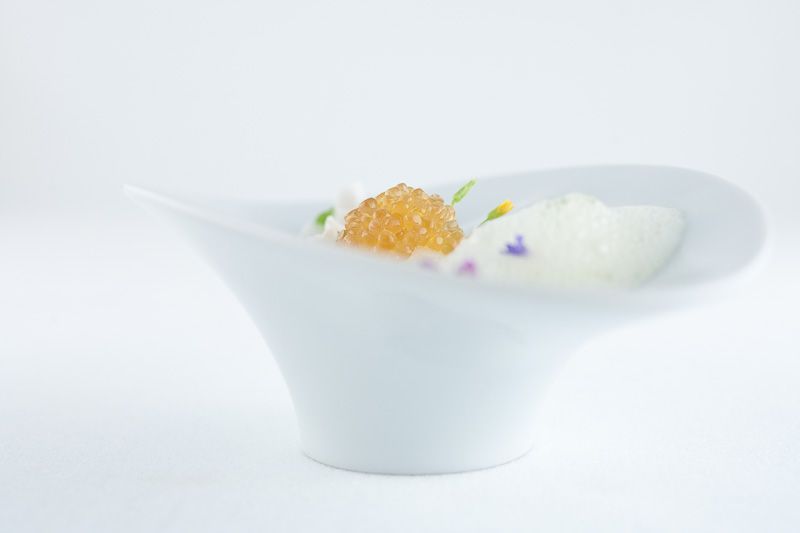
Ugh. I’d have to wait a year if I wanted to really honor this one. Disappointed, I wrote asking him if he might be able to give me an idea of when would be a good time to be shopping for this stuff, so that next year I wouldn’t miss it. He surprised me by recommending I contact his distributor to see if they had any last straggling cans they might be able to sell me.
Cautiously optimistic, I phoned FoodsInSeason, Blis’ exclusive distributor. They initially told me that they had had some in stock, but a Russian importer had phoned in just before I called and ordered 30 tins of the stuff, cleaning them out. My heart fell again, but John (the manager to whom I was speaking) asked me to wait and let him check a few other options. After a bit of back-and-forth, a sales representative ultimately told me that they had a shipment of this stuff coming in the following day, and asked if I’d like to preorder some. This all seemed a little weird to me: how was it they were getting more in-stock if Stallard had said it was out of season? Again cautious, I ordered some. While I was at it, I figured (to consolidate on the extremely-un-cheap shipping rate) I’d also order some smoked and natural steelhead roe as well. I wasn’t sure I would be getting the right stuff, but when a superbly-insulated package showed up a day later, my fears were allayed. I had three beautiful, shiny, delicious-smelling tins of Blis’ finest.
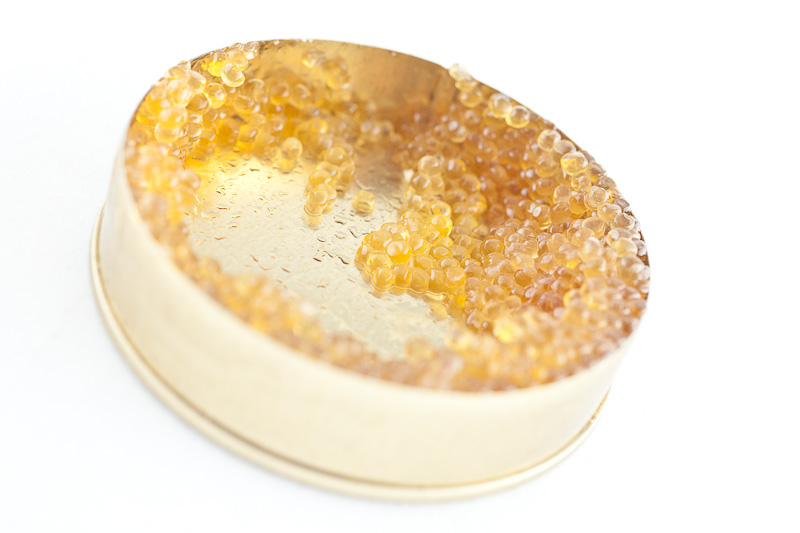
(A side note: the sales representative told me that if I wanted, I could safely freeze the roes and they would last for many months. If anyone reading this has experience with this, can you verify this? My intent at this point is to make as many Alinea recipes featuring roe as I can in the coming days, to ensure my investment doesn’t go wasted, but I’m curious what my options truly are here. I put this question to Stallard but he has not yet responded.)
In addition to the temperamental and sensitive hero ingredient, I also had to deal with liquid nitrogen again. The only LN2 supplier in the East Bay that’s open on Saturdays closes at 1pm, and my dewar holds enough LN2 to buy me about an hour’s worth of use with it, so I have a narrow window to get everything premade, go get the LN2, get it home safely, and finish the dish. If I screw anything up, I either have to take the following Monday off work to try again, or wait a week. Because I was dealing with this precious roe, waiting a week was out of the question, so the tension surrounding this was high.
To ease it, I called in some help from friends. Mike and Joe, I figured, would be particularly-tantalized with the promise of freezing weird things and potentially shattering fingers, and could help me prepare the mise-en-place for the dish. They showed up on a Saturday morning ready for adventure.
I had premade one of the dish’ ingredients–some licorice syrup. I had made some licorice syrup for the avocado/lime dish a few weeks back, and had some left over. It’s got heavy chocolate overtones, so I wanted to compare how this licorice syrup was different. This recipe uses toasted anise, peppercorns, sherry vinegar and molasses in its preparation. It had a long, bitter finish though, so I made a third batch with less licorice extract and more toasted star anise and some fennel seed to try to ease back on the finish. So, we ended up with three licorice syrups to taste and choose from.
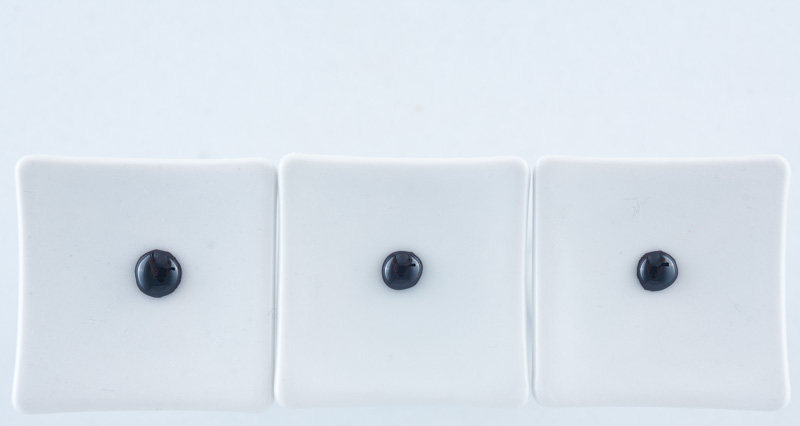
By the time Mike and Joe had arrived, I had been working for a few hours on the main component of this dish: a sphere made from juiced coconut flesh that’s been flash-frozen in liquid nitrogen. I started by cracking open several coconuts…
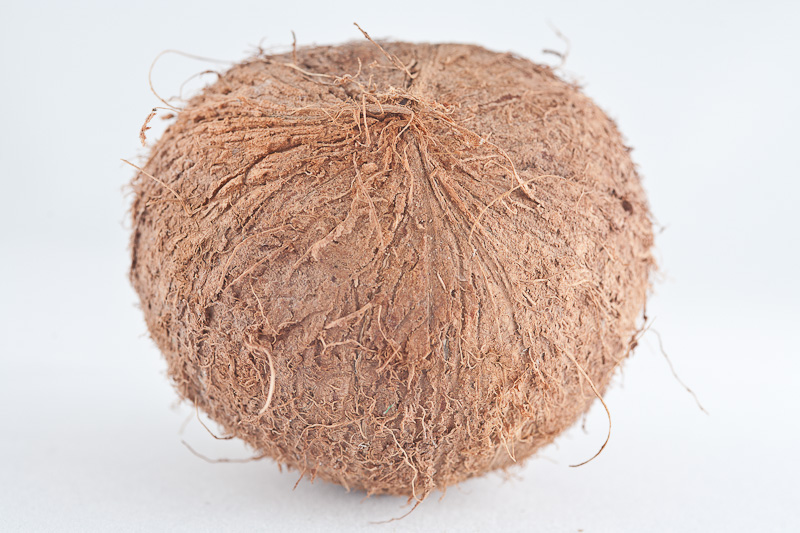
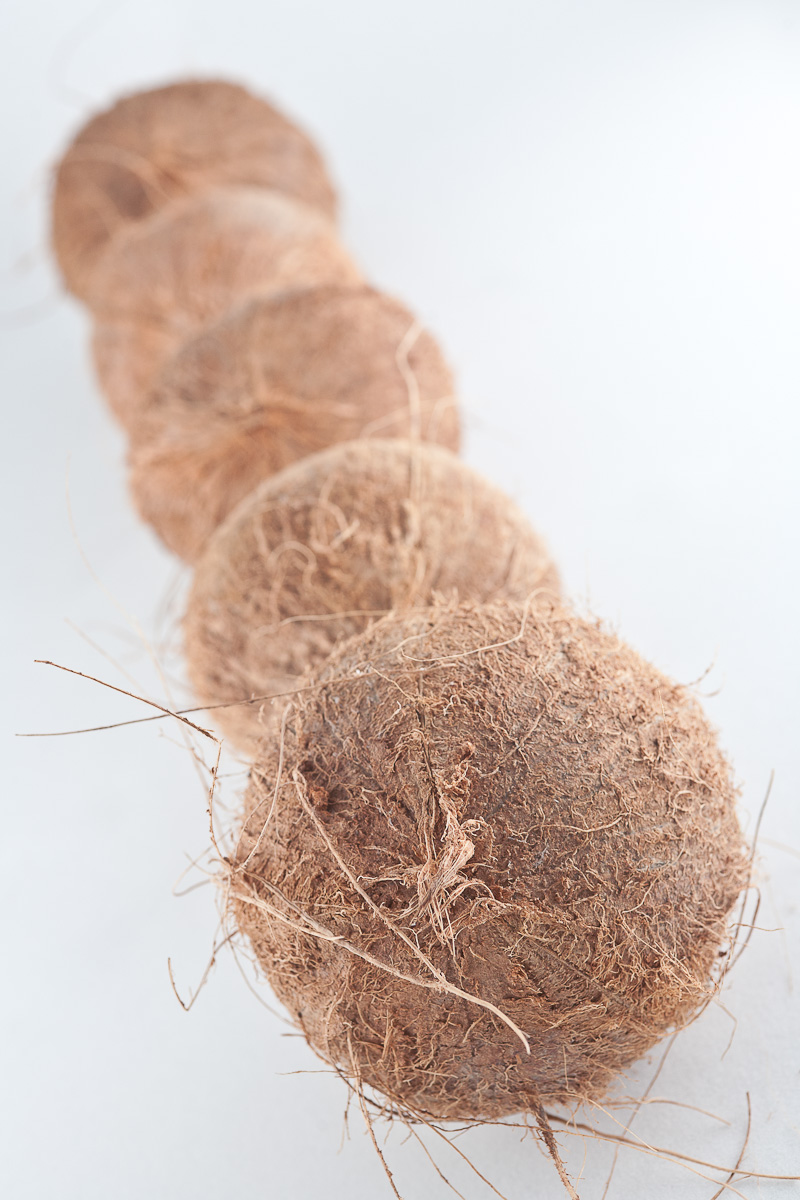
…scooping out the flesh…
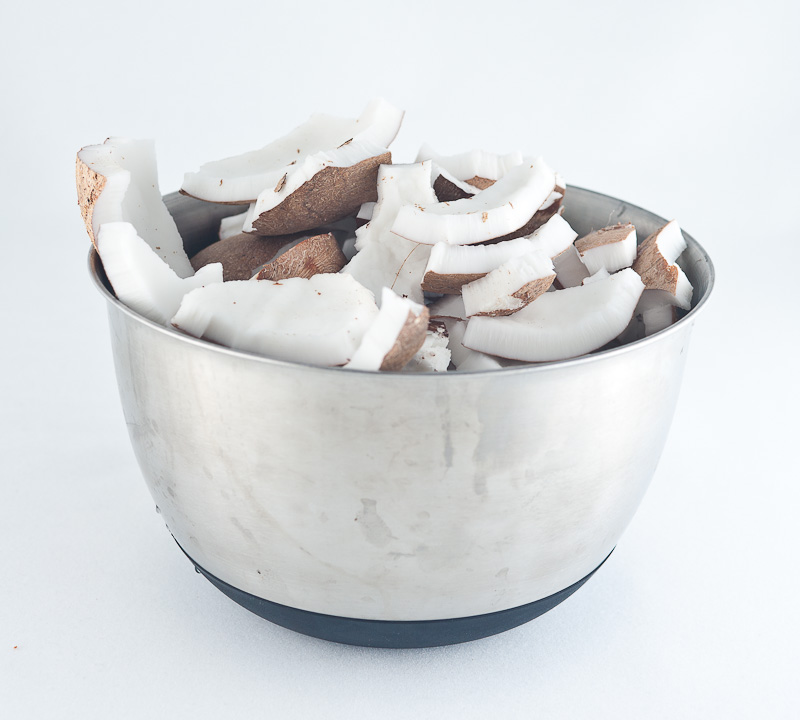
…and then peeling off the brown skin with a vegetable peeler. This last step was tedious and earned me a few decent gashes on my thumbs from the peeler slipping.
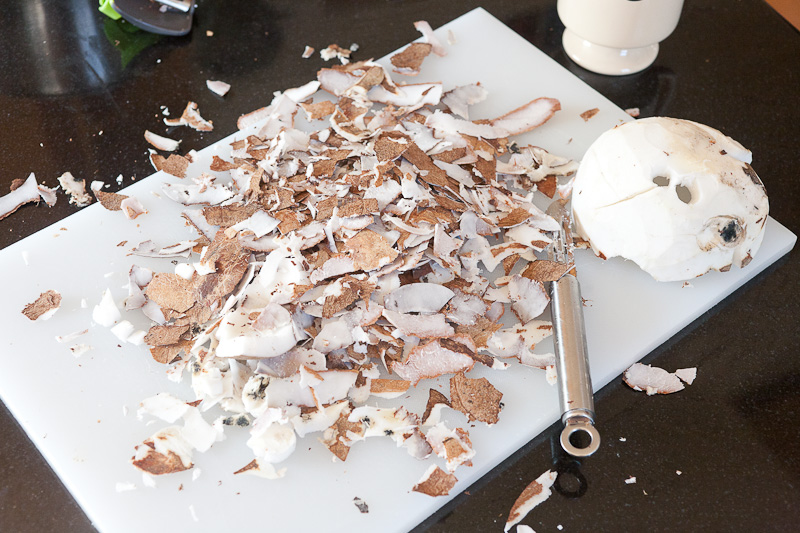
I also juiced a few pineapples, and mixed the juice with xanthan, lecithin, and citric acid, which would ultimately serve to provide the pineapple bubbles used in the final plating.
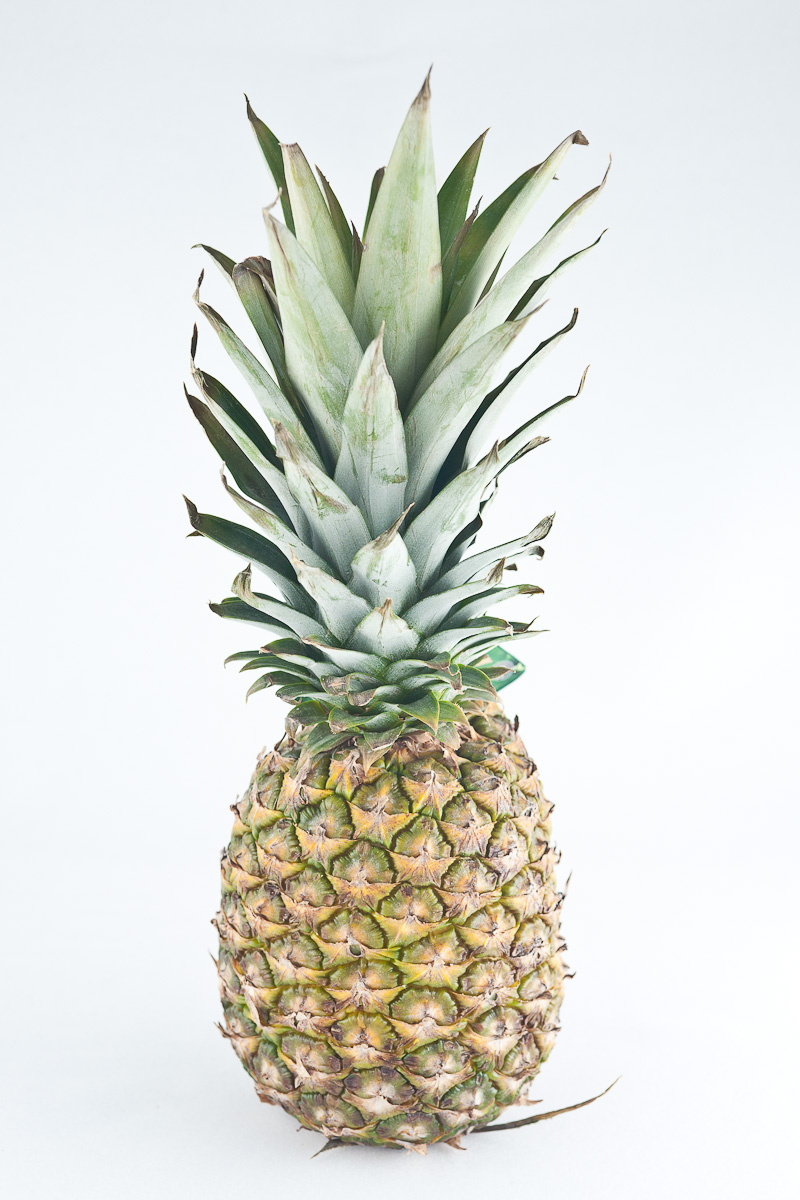
When Mike and Joe arrived, they helped me make some ‘rocks’ made from compressed coconut milk powder and powdered pineapple.
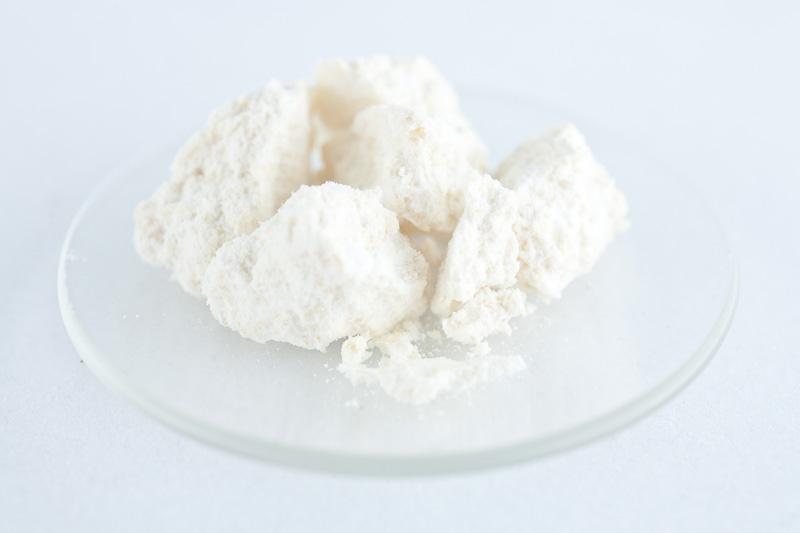
We also cracked open a few young coconuts, the flesh of which was diced into small cubes.
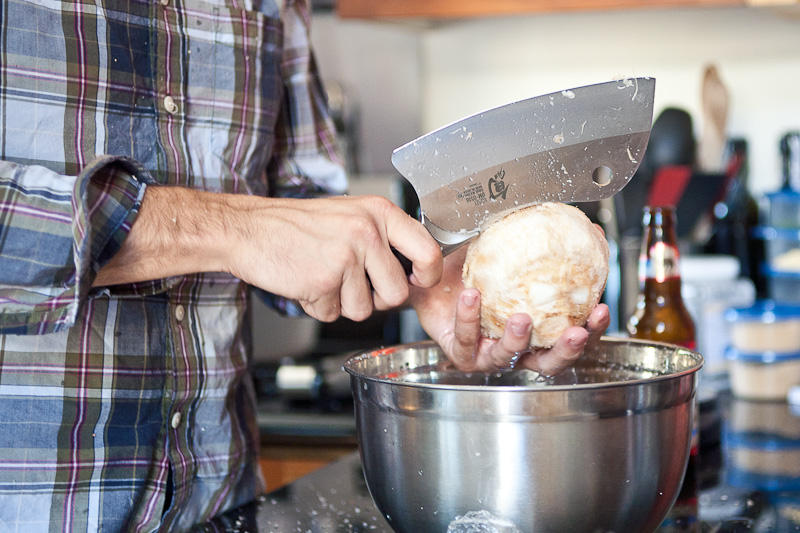
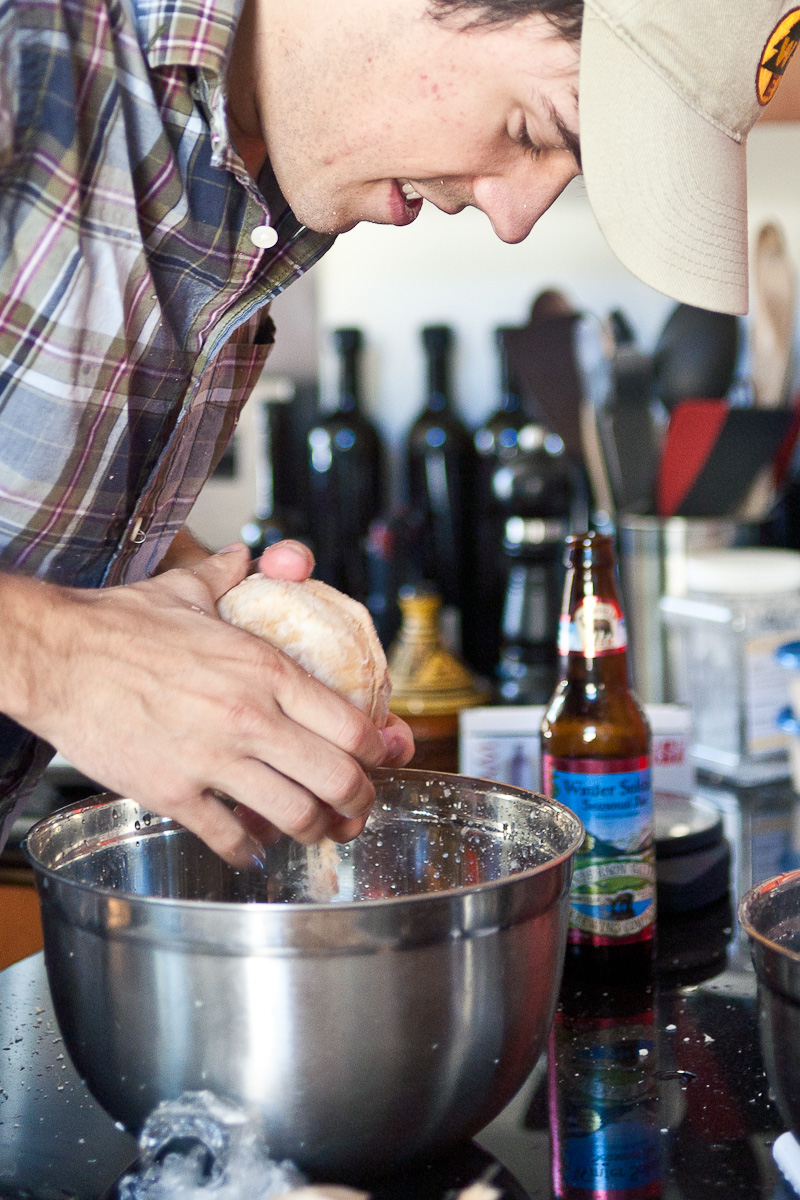

Then it was off to buy some LN2. Whenever I buy liquid nitrogen, I also buy some dry ice, because it’s cheap and fun to experiment with. When we got both back home, we started filling balloons with juice from the juiced coconut flesh. The juiced flesh is very different from coconut water in that it has a much higher fat content. When it cools, it congeals, forming a creamy, very smooth texture. We pressurized the coconut juice in a cream whipper. I assumed this was to ‘whipify’ it, but the coconut fat didn’t absorb any of the nitrous oxide. We learned instead that putting the coconut juice in the cream whipper was just a way to pressurize it, so that you could get it into a water balloon.
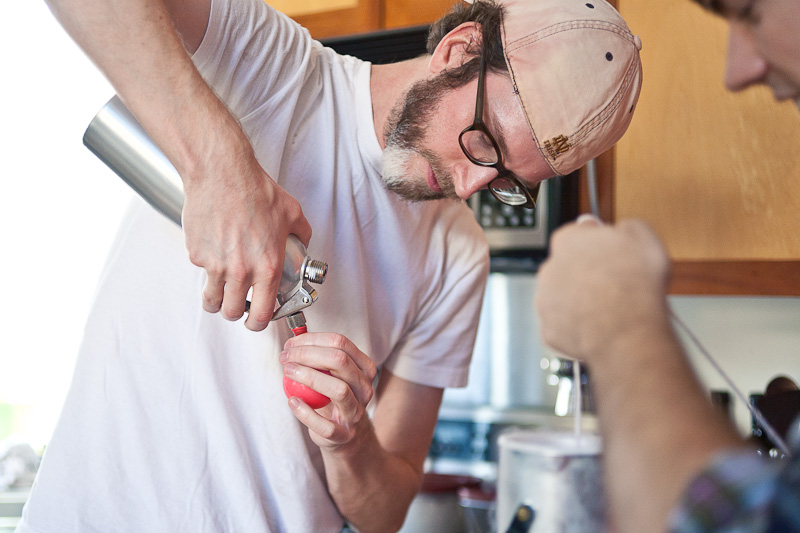
We then dipped the balloons into the liquid nitrogen, which flash-froze them into a spherical shape.
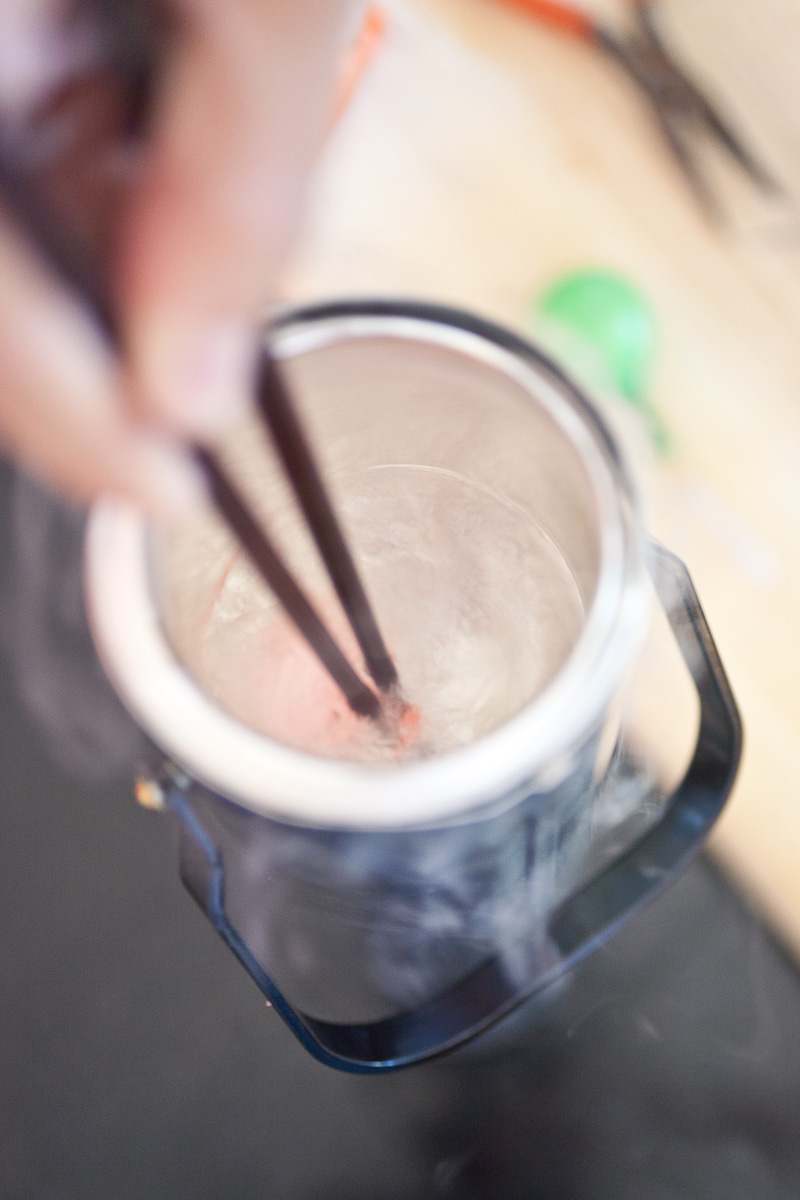
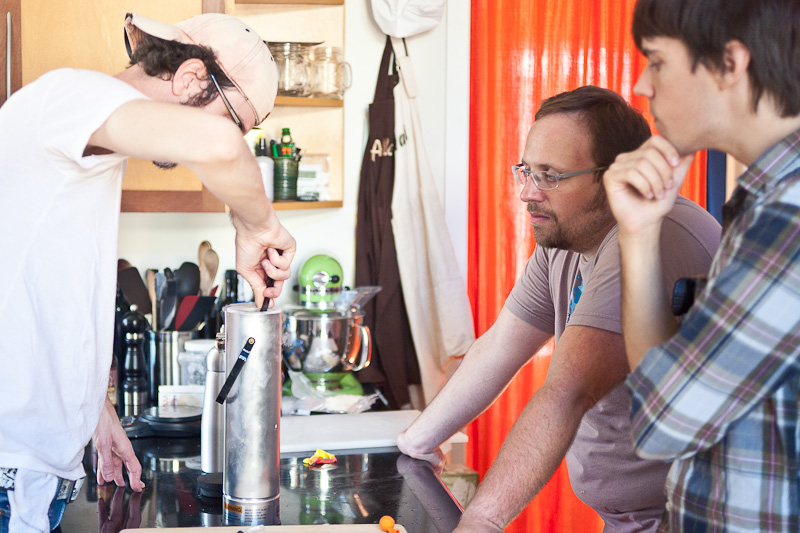
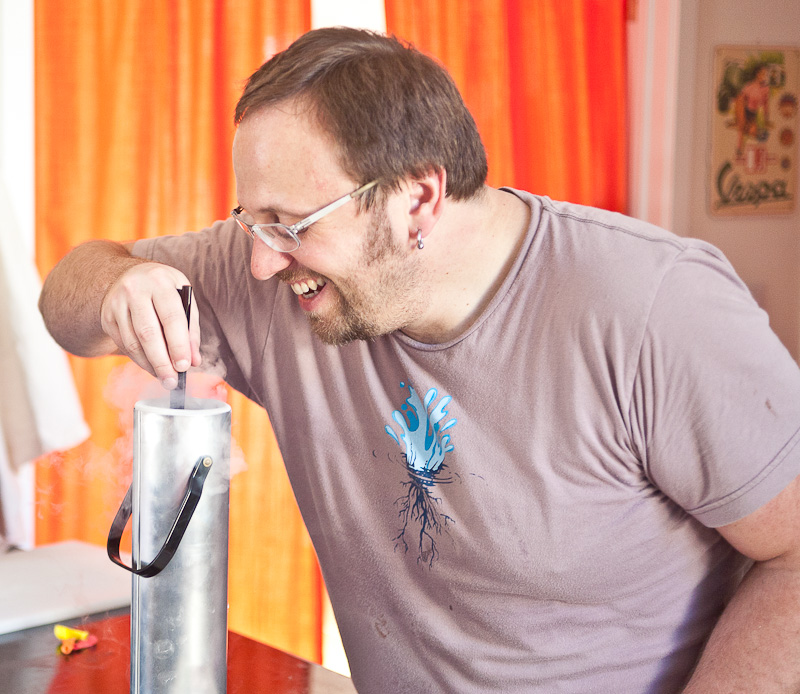
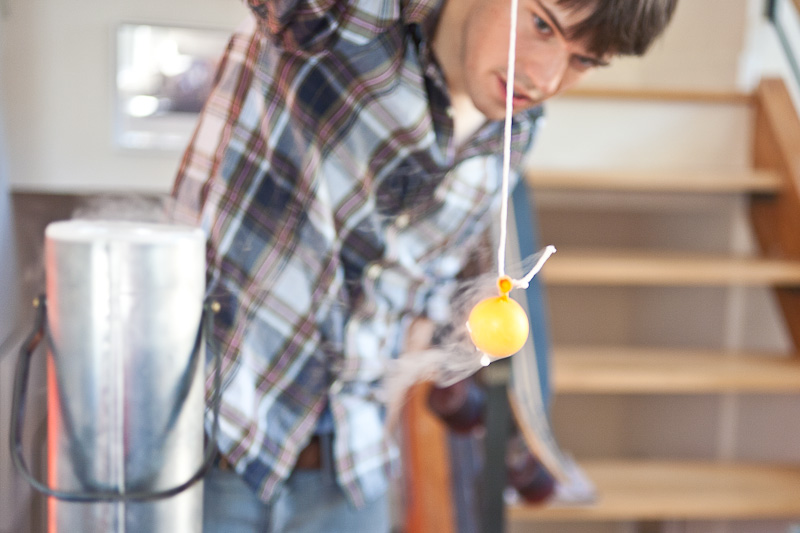
After the spheres are frozen, we peel off the balloon. We used towels to grip the spheres, so that they wouldn’t melt from the heat from our hands.
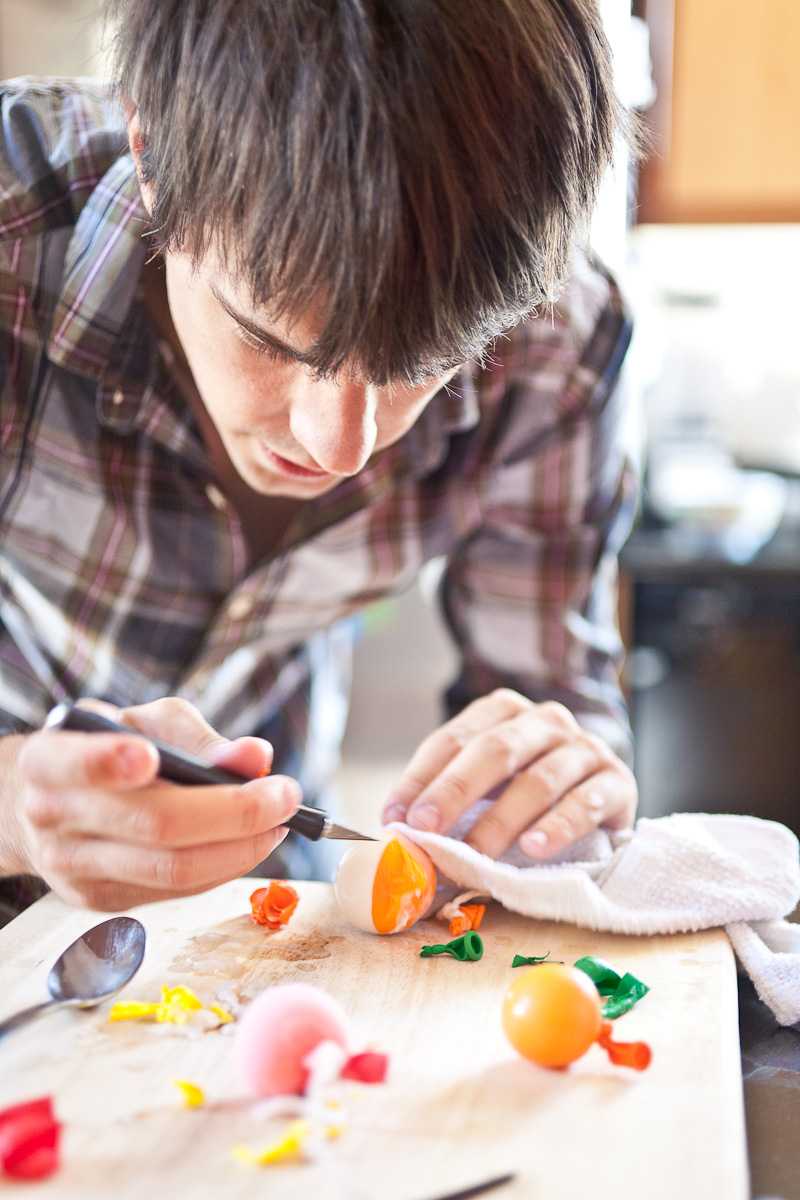
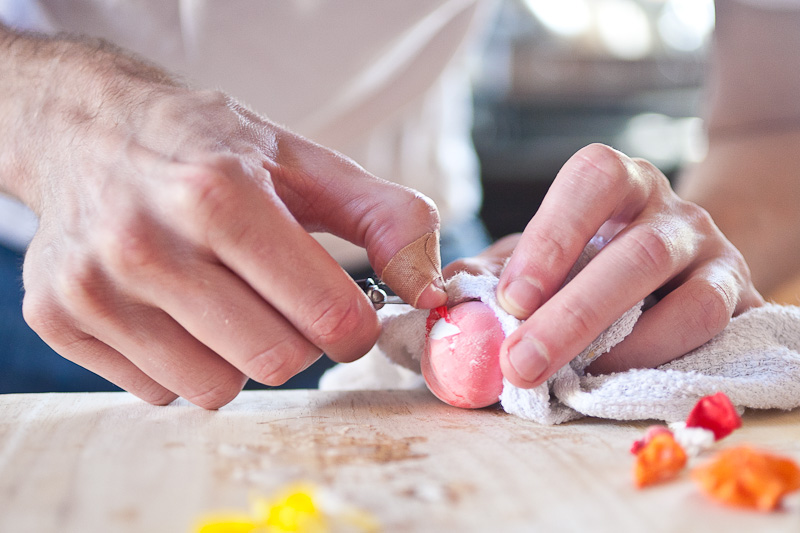
We held the spheres in a cooler of dry ice until service, so they’d hold their shape. They come up to temperature pretty quickly, but as long as they stay reasonably cool they largely hold their shape, and take on a very creamy quality.
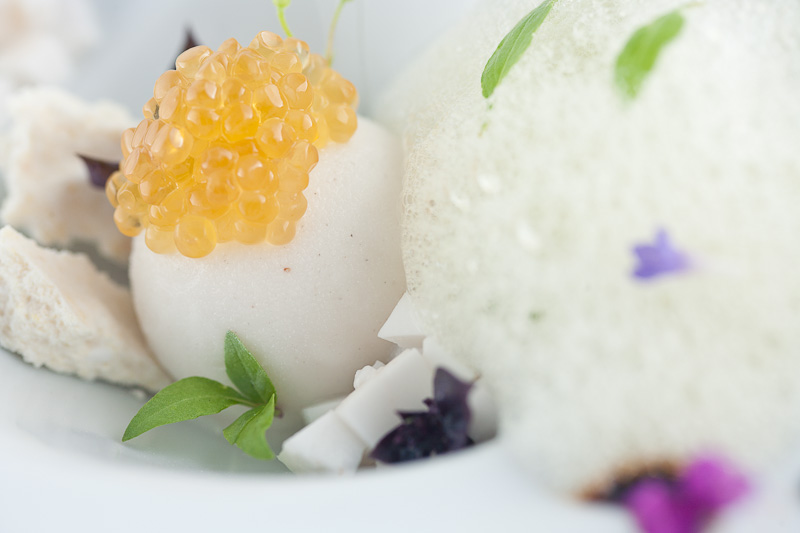
One the spheres were done, it was time to plate everything. First we put down a spoonful of young coconut flesh cubes, then set the coconut sphere on top of them. We placed some coconut/pineapple rocks around the sphere, topped it with the brooke trout roe, and placed dots of licorice syrup alongside. It’s finished with a few spoonfuls of pineapple bubbles, and thai basil buds and leaves.
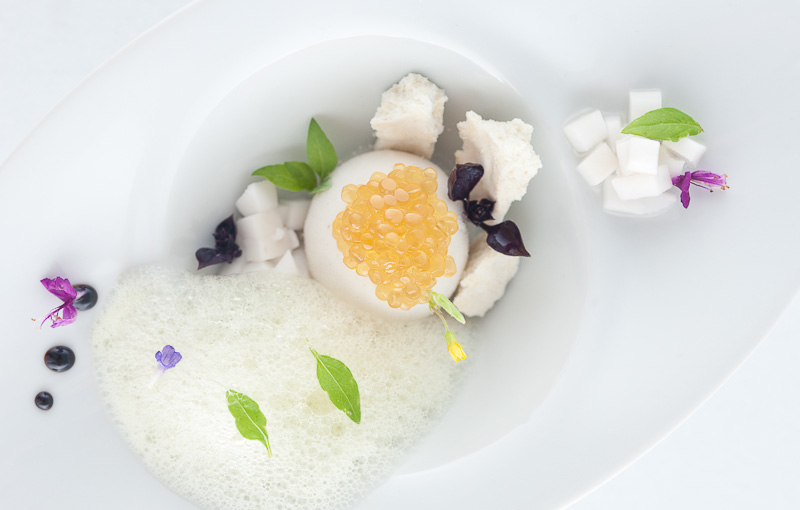
We all took turns plating servings before eating the dish. We agreed unanimously that the whole thing was surprisingly and almost-disturbingly delicious. Like I said, I contend it was one of the most tasty things I’ve made so far. The coconut sphere tastes almost like cake batter; very thick, rich, luxurious, sweet and simultaneously salty. The trout roe is delicious; we tried several spoonfuls of it on its own before and after trying the whole thing. The reasons one would build a dish around it are clear once you’ve tasted it; it’s delicate, salty, creamy, almost oysterlike. The pineapple/coconut rocks are tart and punchy; they and the pineapple bubbles lend a nice tart note to the whole dish, and the tiny basil buds are bright and potent. I particularly loved the accent of the licorice, though Sarah (who doesn’t like licorice at all) disagreed. What we did agree, though, was that this dish is 100% awesome.
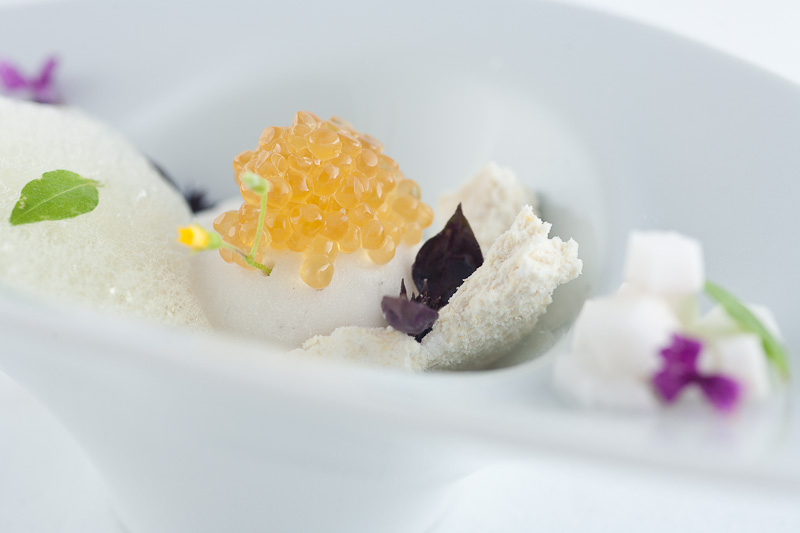
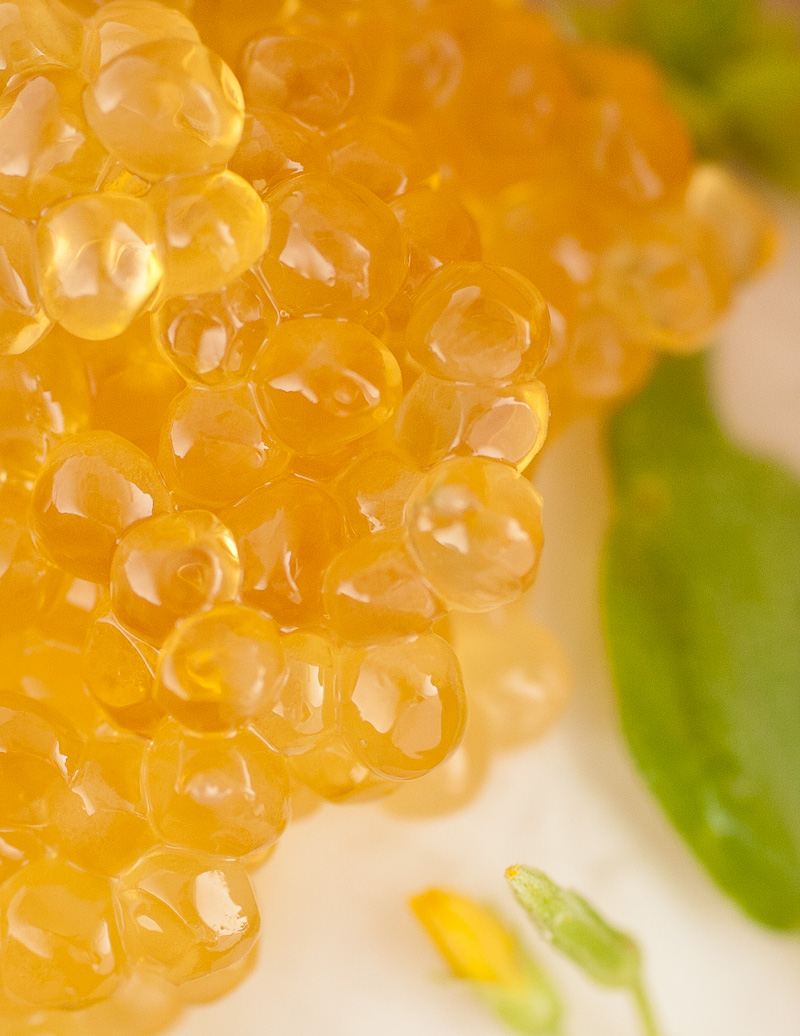
After gorging on a few servings each of this dish, we moved on to playing with the dry ice. The Aviary serves a cocktail in which they freeze a water-filled balloon partially, drain the internal water, and replace it with an Old-Fashioned cocktail. A diner then cracks the egg like a creme-brulee, such that the innards run out and the ice egg chills the drink. We wanted to try making this ourselves. We made an ice bath with dry ice and alcohol, which we could get down to -20C before it started to sieze up and freeze into a slurry. We kept the bath around this temperature, and started dipping balloons in it. To minimize waste from the Trout Roe dish, we decided to switch from an old-fashioned to a pina colada. We filled the balloons with coconut water rather than tap water. After 10 minutes or so, we could indeed produce eggs that were liquid in the center, and could drain them of their contents and hold them in the freezer as we made more.
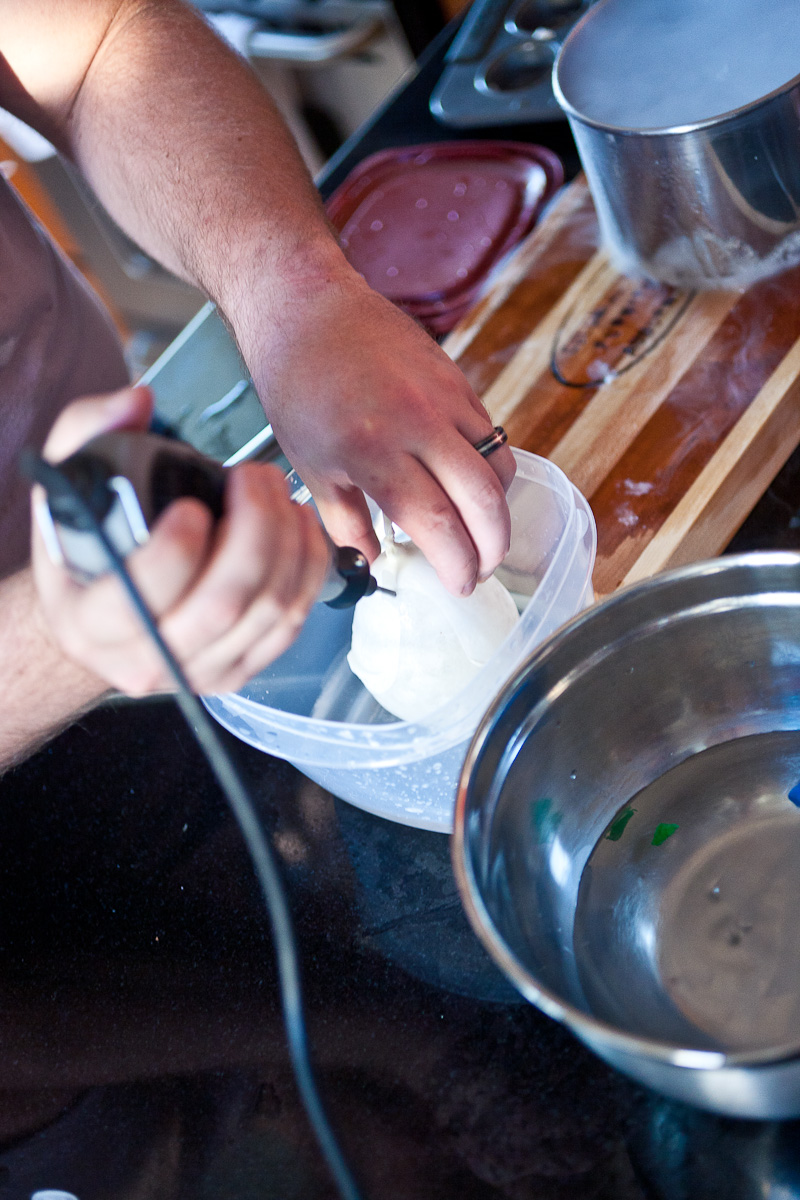

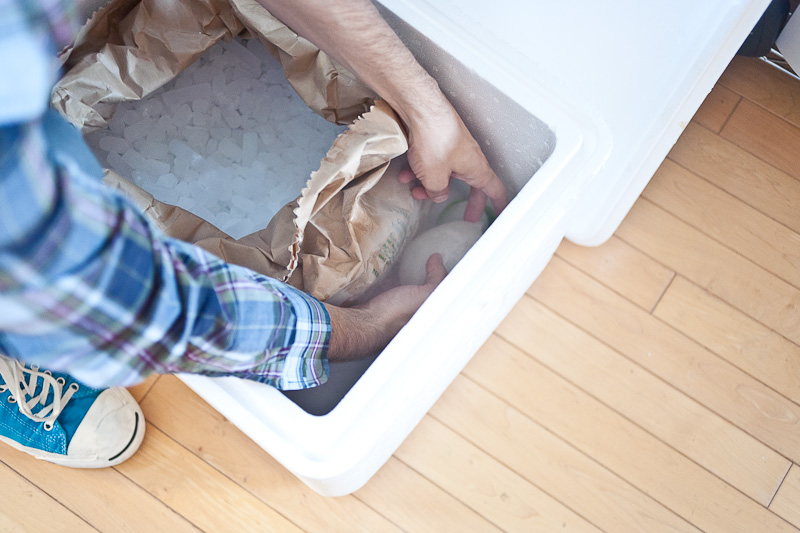
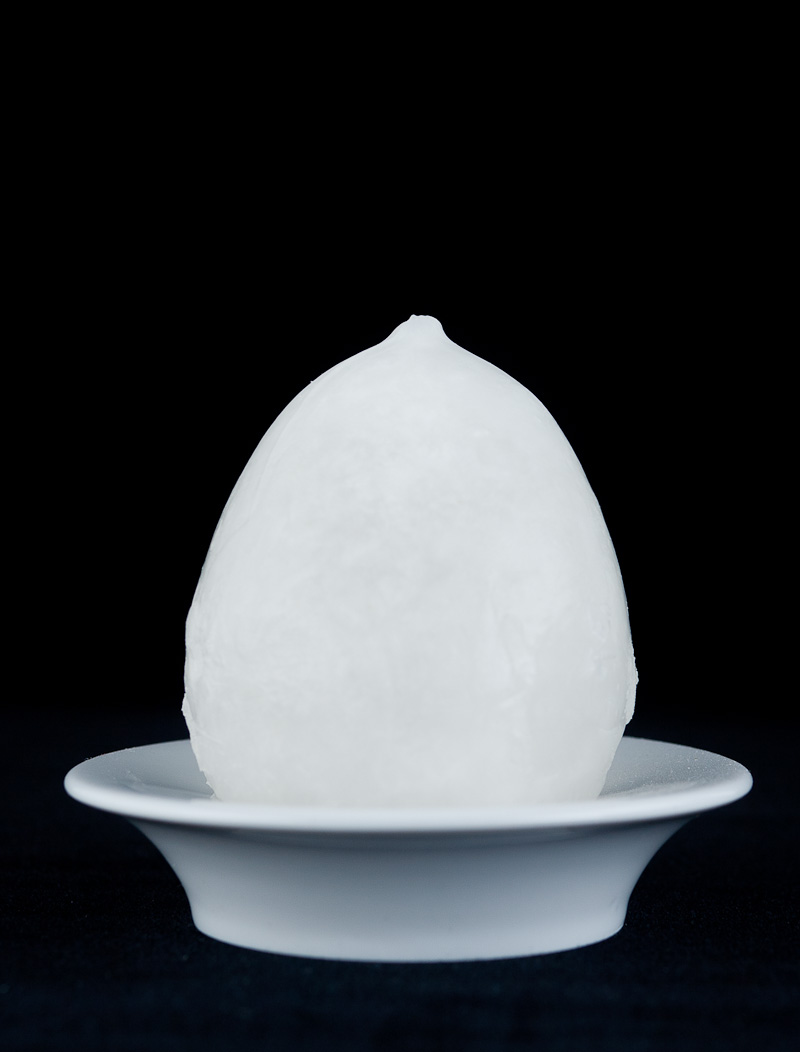
Things seemed to be going well until we tried to fill the eggs. We hadn’t pre-chilled the pina colada mix, and the eggs were notably fragile. When we injected them, they started to melt immediately, with holes forming near the bottom and the injection hole melting on contact with the syringe. The ice itself was fascinating and surprising…it crystallized in a pattern similar to that of coconut flesh (which is to say, it was very striated and ‘fiberous’).
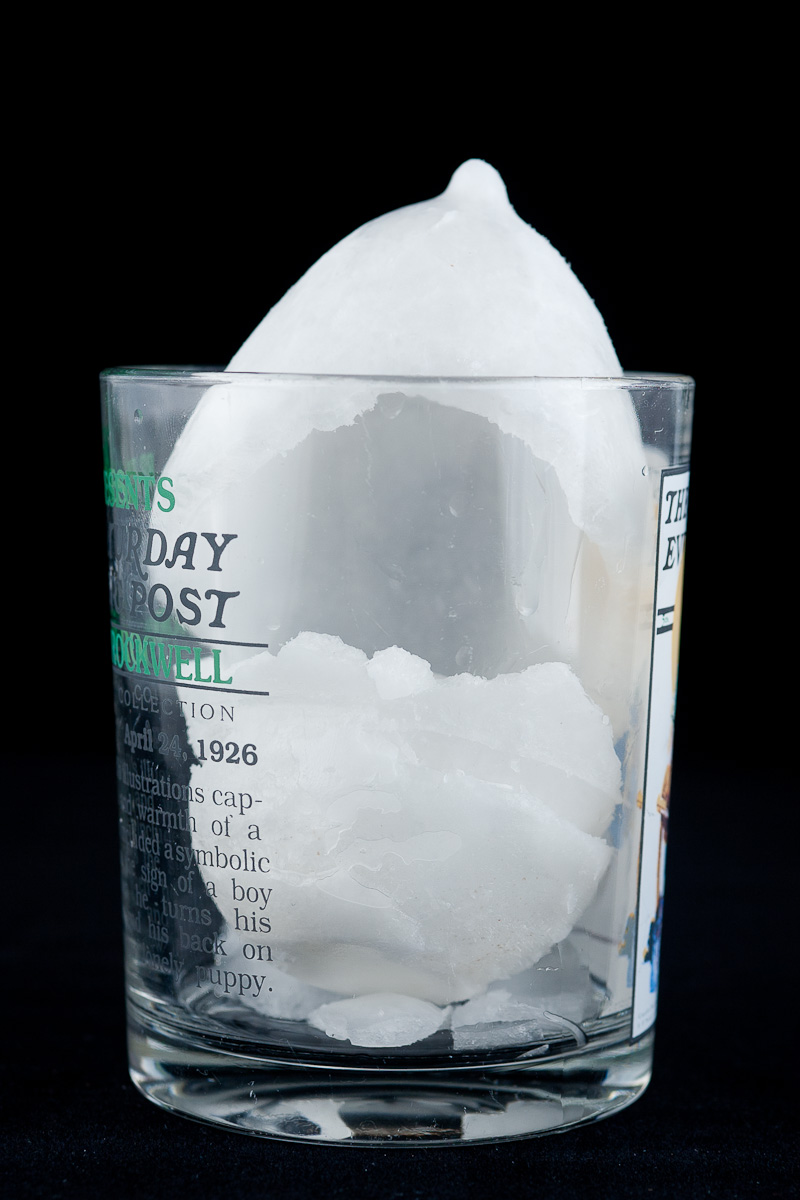
When we tapped the ice with a spoon it didn’t ‘crack’ as crisply as we’d imagined, again because of the crystal structure of the coconut ice. Rather it was more like safety glass or something, kind of turning slushy and granular. The final product wasn’t quite what we were after, but I still learned a fair bit from it. Plus, you know, playing with supercoolants is always awesome even if you just stare at the steam from them all day.
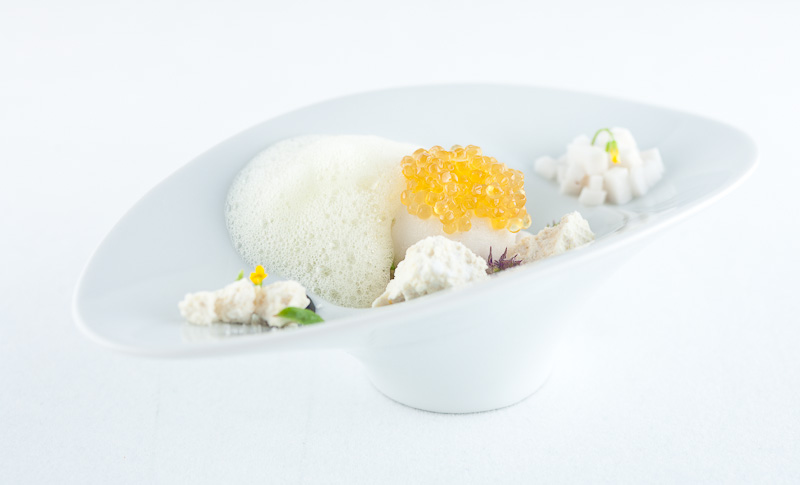
Very cool!
Ps. You can freeze roe, (and hopefully this message isn’t too late), so long as you freeze them properly. The best way I know of would be to lay out a piece of plastic wrap, lay a small portion of the roe in the center, and then pull it together into an airtight bag. Make sure not to touch with bare hands any surface of the plastic that may come in contact with the roe, as that causes spoilage. Put your finished portion bags in a container and into the freezer.
Hi JF! Thanks very much for the reply, and for the technique of freezing roe! Do you happen to know if freezing ‘speed’ is a consideration for roe? I know that typically the slower you freeze something, the longer it takes for ice crystals to form, which in turn can puncture cell walls and cause things to turn to mush on thaw. Is that a factor when freezing roe as well?
You’re welcome!
Yes, freezing speed is a very important factor in freezing anything for long term storage. Generally, the faster, the better, especially in the case of fish roe or any delicate protein. In fact, portioned meats (but not fish) can be refrozen if they were initially frozen properly, thawed properly (in a 33*F-38*F), and refrozen in the same manner.
Generally, the closer you can get your freezer to 0*F for things that are going to be frozen for a while, the better. Also, try not to open that freezer door too much before the product is frozen. Freezers closer to 20-25 degrees are better for ice creams and sorbets, and fruits and vegetables that are going to be utilized in a shorter time frame.